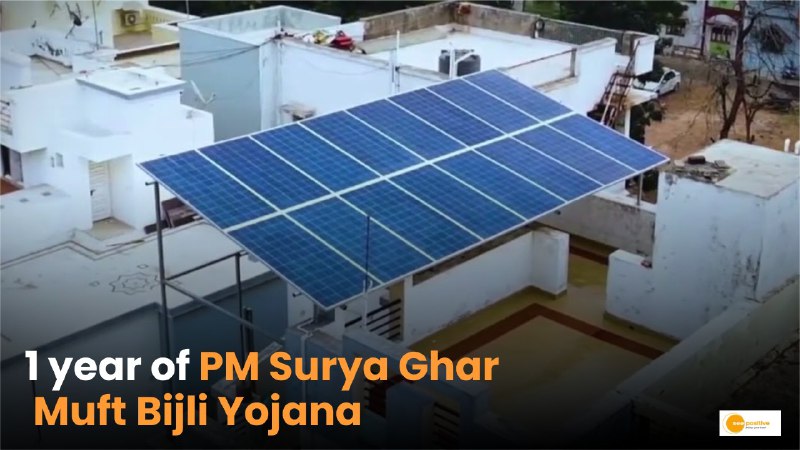The PM Surya Ghar Muft Bijli Yojana has completed one year of its launch. This one year marks an important milestone in India’s push for renewable energy and empowering households, particularly those in rural areas.
This initiative reflects India’s efforts to meet its climate goals while simultaneously promoting energy access, creating jobs, and enhancing the quality of life for millions of people.
A target of benefiting 1 crore
The initiative aims to provide free electricity connections powered by solar energy, contributing to both sustainable development and improving the living standards of low-income families. With a target of benefiting 1 crore (10 million) households by March 2027, the program has already made significant progress, having provided solar-powered electricity to 8.46 lakh (846,000) households.
By focusing on solar energy, the scheme reduces dependency on traditional electricity grids, which can be unreliable in remote areas, and at the same time helps in cutting down carbon emissions, supporting the country’s green energy goals.
Solar installations made much more affordable
Solar energy needs to be made accessible to a larger population. But there are households that may not have the capital to invest in rooftop solar systems upfront. So, loans at around 7% interest are being given under this initiative to help make it financially feasible for people to install residential rooftop solar (RTS) systems up to 3 kW.
Gaining traction in India
The dramatic surge in solar adoption, with monthly installations increasing tenfold to nearly 70,000 households per month, is a strong indication that the PM Surya Ghar: Muft Bijli Yojana (PMSGMBY) is gaining traction and delivering on its promise to empower households through renewable energy. The key factor driving this growth is the attractive subsidy structure, which covers up to 40% of the installation cost. This makes solar installations much more affordable, even for families who might have been hesitant due to the initial costs.
Subsidy & Economic Empowerment
Households that install solar systems not only save on their electricity bills but also have the potential to earn through excess power generation, especially in areas where net metering is available.
So far, ₹4,308.66 crore has been disbursed as Central Financial Assistance (CFA) to 5.54 lakh residential consumers, with an average subsidy of ₹77,800 per household.
How to apply
Interested households can apply with requisite documents on the official portal https://www.pmsuryaghar.gov.in/
The official portal is designed to assist people through the process and vendor selection for solar panel installation can also be done.
Positive Takeaway
In Chhattisgarh, in one year around 2 lac registrations have been completed so far. Households are gaining greater control over their electricity generation by clean energy which can be especially beneficial in areas with inconsistent grid power supply. By making solar power more affordable and accessible, this scheme is contributing substantially to India’s climate goals and its transition to a sustainable energy future.


